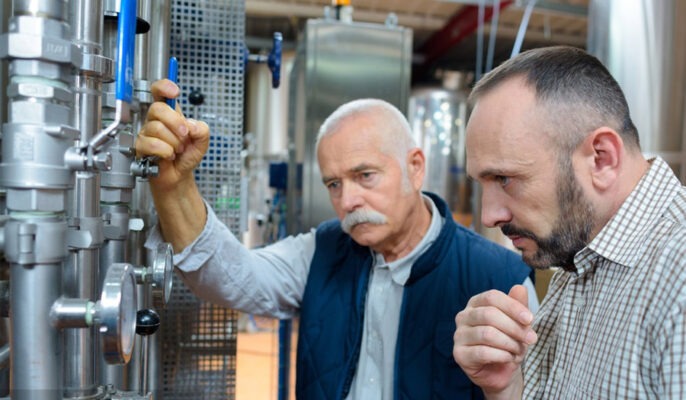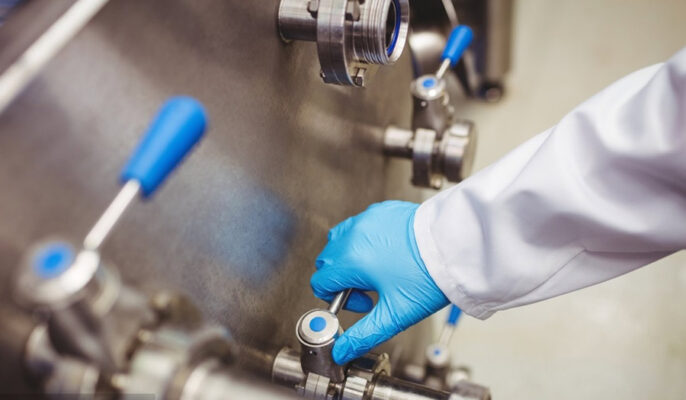Without proper aeration of the wort, lag time increases, making your beer more susceptible to other microorganisms growing in the beer. Whether you use small brewing equipment, or medium-sized 10BBL-20BBL brewing equipment, or commercial brewing equipment above 30BBL. Oxygen in the wort after the beer has cooled is very important. Let’s discuss wort oxygenation in a commercial brewery.
Ways to Aerate Wort
While your beer may produce alcohol without aerating the wort (and it will, unless you have other issues ), it won’t be as dilute as it would be with proper oxygen and will almost be longer than the fermentation time Long it will have the proper level of oxygen. To increase the decay rate of the beer, we can aerate the beer in many ways, such as using paddles, aquarium pumps, or pure oxygen kits.
- Brewers should only attempt to dissolve oxygen into the wort after the wort has cooled below 80°F. The method of dissolving oxygen may vary. Simple methods are the most common, such as stirring the wort and pouring the cooled wort from (sterilized) containers into (sterilized) containers (i.e. boilers and fermenters).
- The aquarium pump can also help with aeration. When using an aquarium pump, it’s important to remember that oxygen makes up only a small fraction of the Earth’s atmosphere, and that’s what the aquarium pump will put into the wort – meaning the pump should run longer.
- When using pure oxygen, such as our oxygenation kit, it takes only 5 minutes for a 5-gallon batch to achieve an adequate level of oxygen.

Why does cold wort need oxygen?
Yeast utilizes dissolved oxygen in the wort to synthesize unsaturated fatty acids and sterols, which are essential for the development of cell membranes. Enough dissolved oxygen (DO) ensures high yeast growth, a fast start of fermentation, and good maturation. Brewer’s yeast grown in wort does not use oxygen for respiration.
Why does fermentation must oxygen?
Aerobic respiration, the first stage of active fermentation, occurs after the lag time associated with placing the yeast in a new environment. During this time, the yeast scavenges available oxygen and ferments the sugars, but the by-products of this fermentation do not include alcohol. Yeast needs oxygen to synthesize sterols. Sterols keep yeast cell walls flexible, ensuring cell growth and health. This fermentation stage, which usually takes a few hours to complete, will create many new yeast cells and help the yeast continue to ferment the remaining sugars and produce our much-loved by-product of fermentation, alcohol.
Ventilation and Oxygenation
The most efficient way to add oxygen is to use 100% pure oxygen. Most people don’t have the means or machinery to make pure oxygen, so we usually buy it in tanks from a gas supplier. A typical winery oxygenation injection system will include:
- oxygen tank
- Oxygen tank regulator
- Two sections of piping
- In-line air filter
- Diffusion stone
Aeration injection looks similar but doesn’t need an oxygen tank or regulator. Instead, a simple aeration injection setup would be:
- Aquarium pumps
- Two 3 ft (91 cm) lengths of 1/4” tubing
- In-line air filter
- Diffusion stone
A small pump is needed to pressurize the outside air through the filter and down through the diffuser stone in the wort. If using aeration, 15-25 minutes is recommended.

Why is aeration important in commercial brewing?
- The boiled hop wort does not contain oxygen.
- Oxygen in the early stages of fermentation promotes cell health and reproduction.
- Yeasts whose cell walls are weak due to a lack of oxygen during the developmental stage cannot survive the repeated budding necessary to produce an optimal yeast population.
- Oxygen is required for the production of sterols, and the development of this cell plays a vital role in the yeast’s ability to metabolize wort sugars into alcohol and carbon dioxide without developing off-flavors or off-flavors.
- The presence of oxygen in the early stages of fermentation minimizes the development of off-flavors and off-flavors caused by esters and other by-products.
- A strong cell membrane enhances the alcohol tolerance of the yeast, which is especially important for high-strength worts.
Advantages of ventilation
Aeration is critical to yeast health and growth. If you provide oxygen early on, your yeast will be stronger and reproduce more . You’ll also find that the lag time is reduced, giving yeast a better chance of colonizing the wort than bacteria. It also increases the odds of a quick, full fermentation. Aeration is a simple and effective brewing technique that can spice up your brewing day.




